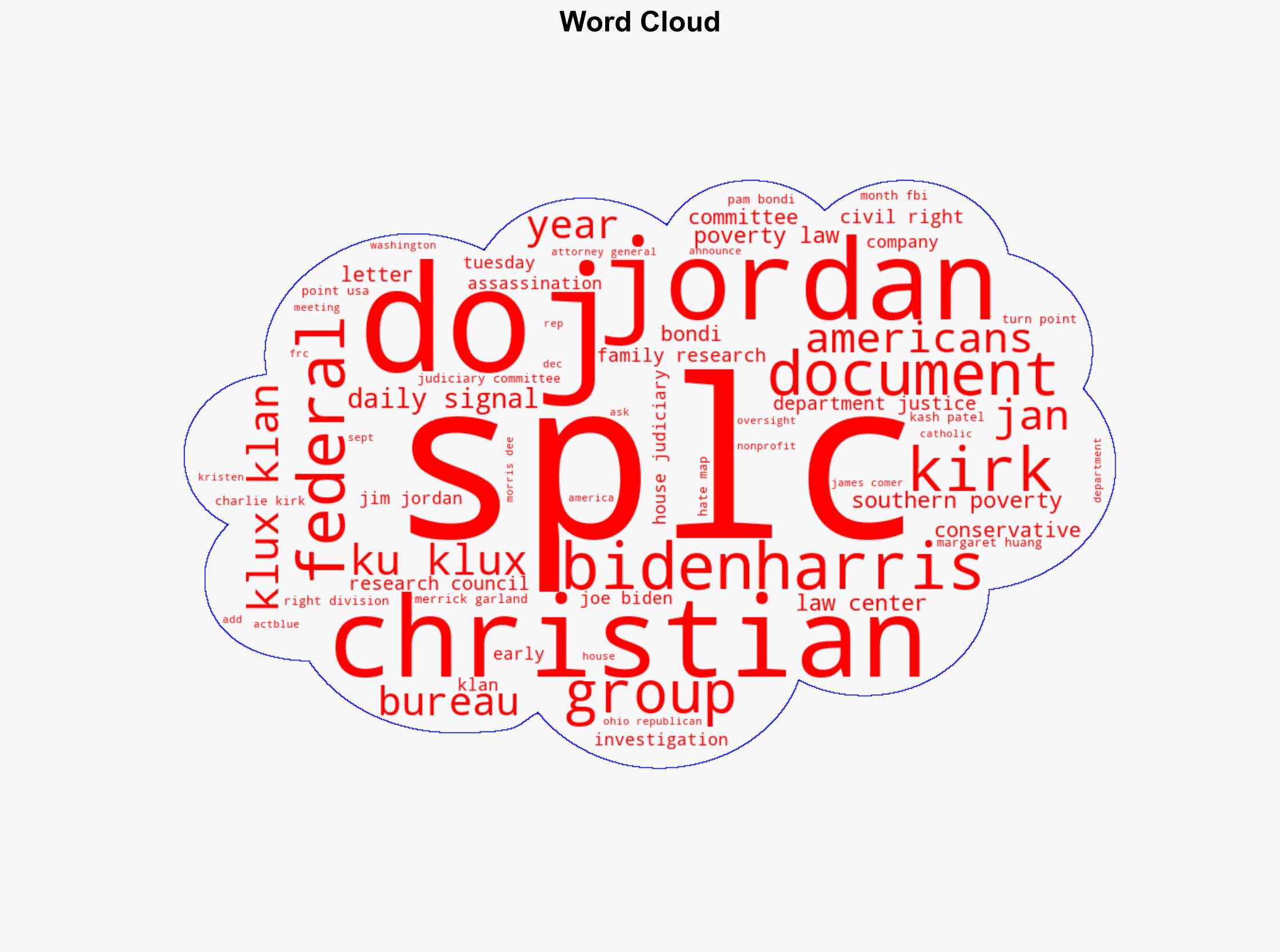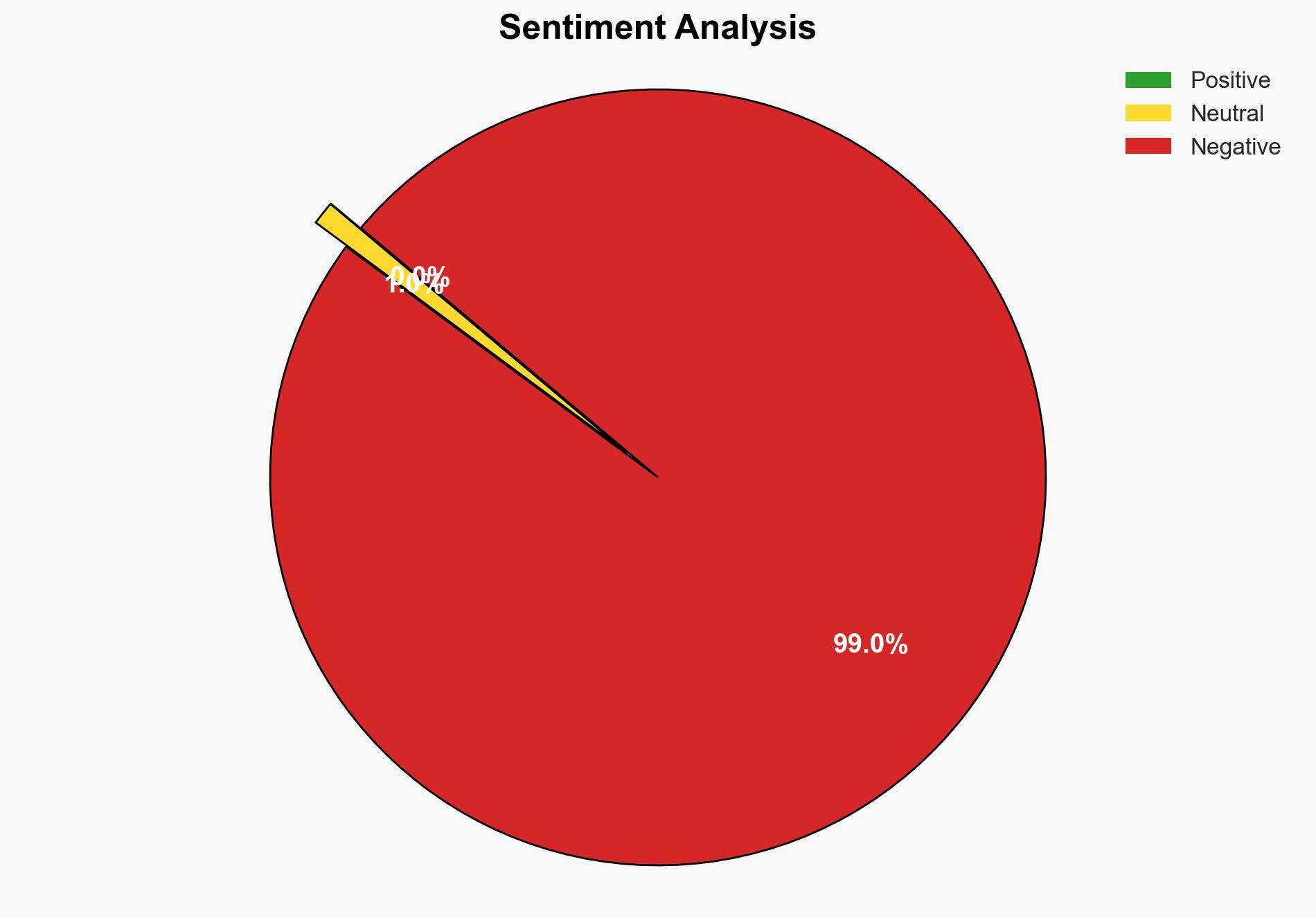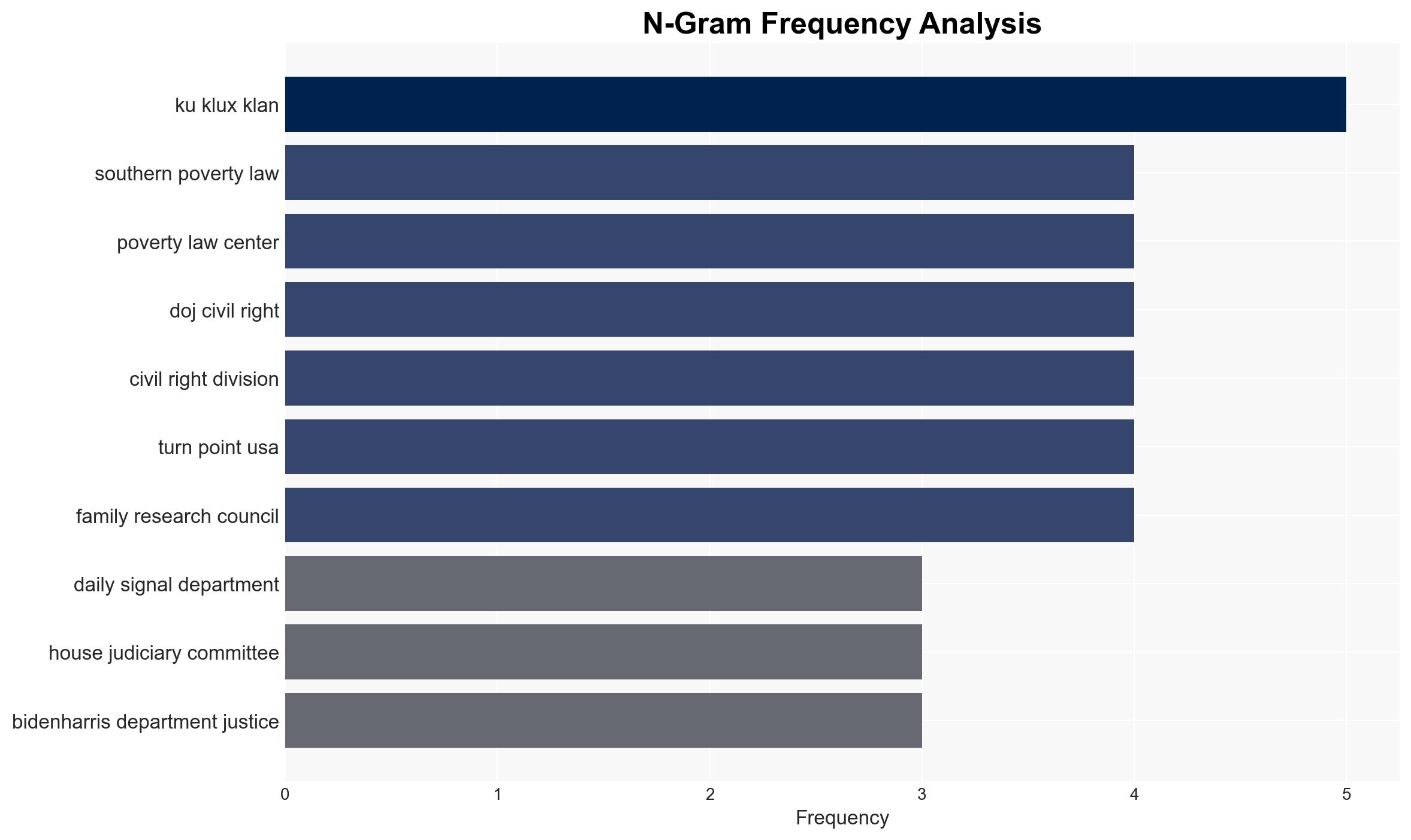EXCLUSIVE Just How Closely Did Bidens DOJ Rely on the SPLC Jim Jordan Is on the Case
Published on: 2025-11-25
AI-powered OSINT brief from verified open sources. Automated NLP signal extraction with human verification. See our Methodology and Why WorldWideWatchers.
Intelligence Report:
1. BLUF (Bottom Line Up Front)
There is a moderate confidence level that the Department of Justice (DOJ) under the Biden administration has engaged with the Southern Poverty Law Center (SPLC) in a manner that may influence federal law enforcement priorities, particularly concerning conservative groups. The most supported hypothesis suggests a strategic partnership aimed at addressing civil rights issues but potentially leading to perceived bias against conservative organizations. Recommended actions include increased transparency and oversight to ensure balanced enforcement of federal laws.
2. Competing Hypotheses
Hypothesis 1: The DOJ’s collaboration with the SPLC is primarily focused on leveraging SPLC’s expertise in civil rights to enhance federal enforcement capabilities, with no intentional bias against conservative groups.
Hypothesis 2: The DOJ’s relationship with the SPLC reflects a strategic alignment with left-leaning ideologies, potentially leading to biased enforcement actions against conservative organizations.
Hypothesis 2 is more likely due to documented instances of SPLC’s influence on DOJ activities, such as training and data access, and the SPLC’s controversial labeling of conservative groups as hate organizations.
3. Key Assumptions and Red Flags
Assumptions include the belief that DOJ’s actions are influenced by SPLC’s ideological stance. Red flags include the SPLC’s history of labeling conservative groups as hate organizations and the DOJ’s lack of transparency in its interactions with the SPLC. Potential bias risks stem from SPLC’s known political leanings, which may not align with a balanced federal enforcement approach. Deception indicators include the possibility of selective information disclosure by both DOJ and SPLC.
4. Implications and Strategic Risks
The DOJ’s perceived bias could lead to increased political polarization and erosion of trust in federal institutions. There is a risk of retaliatory actions by conservative groups, potentially escalating into legal challenges or public campaigns against the DOJ. Additionally, this situation could be exploited by foreign adversaries to sow discord within the U.S. political landscape.
5. Recommendations and Outlook
- Conduct an independent audit of DOJ’s interactions with SPLC to ensure transparency and accountability.
- Establish clear guidelines for partnerships between federal agencies and external organizations to prevent perceived bias.
- Best-case scenario: DOJ improves transparency, restoring public trust and ensuring balanced law enforcement.
- Worst-case scenario: Continued perception of bias leads to significant political and social unrest.
- Most-likely scenario: Incremental improvements in transparency, with ongoing scrutiny from political entities.
6. Key Individuals and Entities
Jim Jordan, Merrick Garland, Kristen Clarke, Charlie Kirk, Morris Dee, Margaret Huang.
7. Thematic Tags
Regional Focus, United States, Federal Law Enforcement, Political Polarization, Civil Rights, Conservative Groups, Ideological Bias
Structured Analytic Techniques Applied
- Causal Layered Analysis (CLA): Analyze events across surface happenings, systems, worldviews, and myths.
- Cross-Impact Simulation: Model ripple effects across neighboring states, conflicts, or economic dependencies.
- Scenario Generation: Explore divergent futures under varying assumptions to identify plausible paths.
- Cognitive Bias Stress Test: Structured challenge to expose and correct biases.
- Narrative Pattern Analysis: Deconstruct and track propaganda or influence narratives.
Explore more:
Regional Focus Briefs ·
Daily Summary ·
Support us





